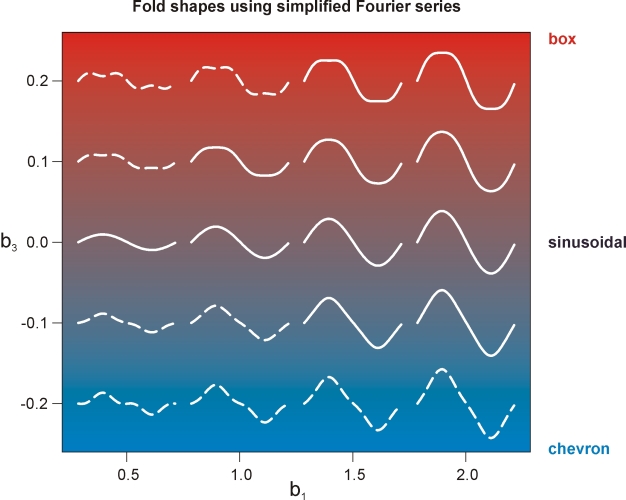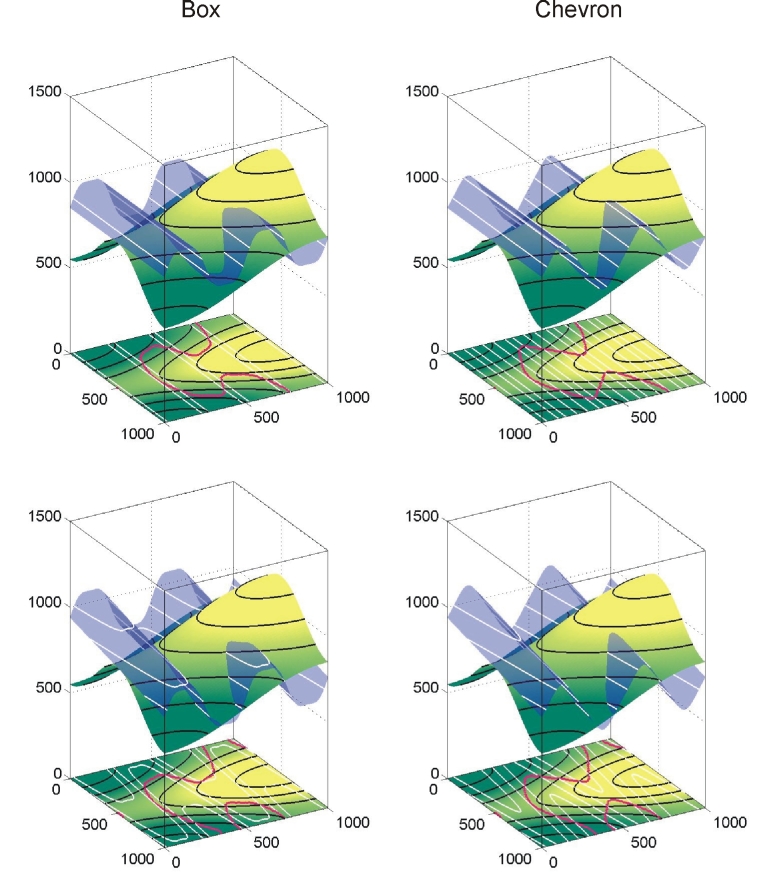
where b1 and b3 are Fourier coefficients that determine the fold shape and w is the wavelength. The first coefficient modifies the amplitude of the fold, whereas the third the shape (box fold if b3 positive and chevron fold if negative). A chart of fold shapes that were plotted using the above equation is shown below with double hinged folds shown as dashed lines.

To plot box- and chevron folds and their structure contours open the file structure_contours_folds.m in Matlab. In the Matlab editor select the menu ‘debug’ and ‘run’. In the Matlab command window the following text appears:
Please choose topography
valley (enter 1), ridge (enter 2) or both (enter 3)?
Type 1, 2 or 3 and press the return key. Then the following text appears:
Please choose geological structure
Box- and Chevron folds (enter 1) or parastitc folds (enter 2)?
Type 1 and press the return key. Then the following text appears:
plunge of fold:
Type the plunge of the fold (in degrees) and press the return key. Then you are asked the following:
Please enter harmonic coefficients, b1 and b3
b1:
b3:
Type in the coefficients (some guidelines are given in the diagram above) and press return. The Matlab diagrams shown below give some examples with non-plunging (top) and 10 degree plunging box and chevron folds that were created with this script. The box fold Fourier coefficients b1 and b3 are 1.5 and 0.2, respectively, and chevron fold Fourier coefficients b1 and b3 are 1.5 and -0.1, respectively,
